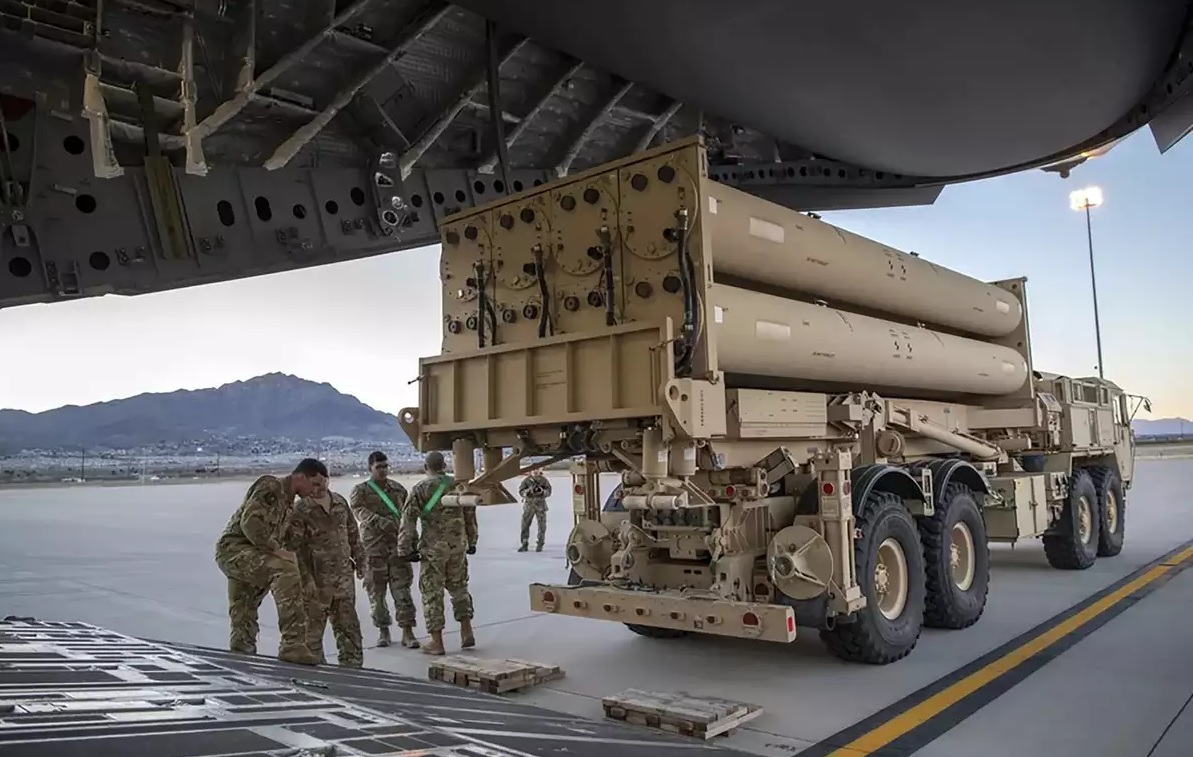U.S. to Deploy THAAD Missile Defense System in Israel Amid Rising Tensions with Iran

The United States has announced that it will deploy its advanced Terminal High-Altitude Area Defense (THAAD) missile system to Israel, sending a powerful signal of support amid increasing hostilities in the region. The decision to deploy the THAAD battery, along with a U.S. military crew to operate it, was made following a series of escalating threats from Iran and recent incidents that have heightened tensions in the Middle East.
What is THAAD and Why is it Significant?
THAAD is one of the world’s most advanced missile defense systems, designed to intercept and destroy short, medium, and intermediate-range ballistic missiles during their final phase of flight. Unlike other missile defense systems, THAAD intercepts incoming threats at high altitudes—outside the Earth's atmosphere—using the kinetic energy of impact to neutralize the target. The system employs a powerful radar, advanced fire control, and interceptor missiles, making it highly effective against complex missile threats.
The THAAD battery's deployment in Israel marks a significant enhancement to the country's already sophisticated air defense network, which includes systems such as Iron Dome, David's Sling, and Arrow. By integrating with these existing layers, the THAAD system adds a new dimension to Israel's missile defense, particularly against long-range ballistic missiles that may be launched from adversaries like Iran.
The Strategic Context: Rising Tensions with Iran
The deployment of the THAAD system to Israel comes in response to Iran's intensified military activities and its support for groups like Hezbollah in Lebanon. On April 13 and October 1, Iran launched unprecedented attacks on Israel, escalating a conflict that has seen increased rocket fire and border skirmishes. The U.S. move is intended to bolster Israel's defense capabilities and send a clear message to Iran about America's commitment to defending its ally.
The THAAD deployment also coincides with a recent incident in which Israeli troops were targeted by anti-tank missile fire from southern Lebanon, resulting in multiple injuries. This has underscored the volatile situation along Israel's northern border and raised concerns about a broader conflict potentially involving Iranian-backed forces.
U.S. Commitment and Military Presence in the Region
Pentagon Press Secretary Maj. General Pat Ryder confirmed that the deployment is part of a broader U.S. strategy to support Israel and safeguard American citizens in the region. "This action underscores the United States' ironclad commitment to the defense of Israel and to protecting Americans from further ballistic missile attacks by Iran," Ryder stated.
This isn’t the first time the THAAD system has been deployed to the Middle East. The U.S. previously stationed a THAAD battery in Israel back in 2019 for a training exercise to evaluate the integration of American and Israeli air defense systems. Such exercises are essential for ensuring that the THAAD system can function seamlessly within the existing defense architecture of Israel, which includes close collaboration between Israeli forces and U.S. military personnel.
Enhancing Israel’s Layered Air Defense Network
Israel’s air defense strategy is built around a multi-layered approach, utilizing different systems to intercept various types of threats. While Iron Dome focuses on countering short-range rockets and artillery, David's Sling and Arrow provide medium to long-range missile defense capabilities. The addition of THAAD enhances this network by offering an extra layer to intercept missiles at higher altitudes and longer ranges, providing additional time to neutralize threats.
The THAAD system’s radar, known as AN/TPY-2, is also one of the most powerful in the world. It can detect, track, and discriminate between multiple missile threats from long distances, giving Israel greater situational awareness and reaction time. When integrated with Israel's existing air defense systems, this radar capability offers a more robust early-warning system to detect incoming ballistic missiles, potentially launched from Iran or its allied militias.
Implications for the Region
Deploying the THAAD system in Israel not only strengthens the country’s defense against direct threats but also acts as a deterrence strategy against Iran and its proxies. By positioning advanced U.S. military technology in the region, the U.S. is reaffirming its support for Israel while signaling to Tehran that any aggressive actions will be met with a robust defense response. This move may also reassure other U.S. allies in the Middle East, who are concerned about Iran’s growing influence and missile capabilities.
The deployment could have broader geopolitical implications. With tensions rising and regional actors closely watching, the presence of THAAD could deter further provocations from Iran while potentially triggering a military buildup in neighboring states. The Middle East is no stranger to arms races, and the addition of THAAD to Israel's defense arsenal could lead to increased military posturing from regional rivals.
The U.S. decision to deploy the THAAD missile defense system in Israel highlights the importance of adapting to evolving security challenges in the Middle East. As Israel faces a complex array of threats, particularly from Iran, the THAAD system provides an additional layer of protection that enhances the country’s multi-layered air defense network. It also reinforces the U.S.-Israel defense partnership, ensuring that both nations are better prepared to address missile threats, protect civilians, and maintain stability in a volatile region.
The deployment serves as a powerful statement of support from the U.S. to Israel, amid ongoing hostilities and unpredictable developments that characterize the current security landscape in the Middle East.


